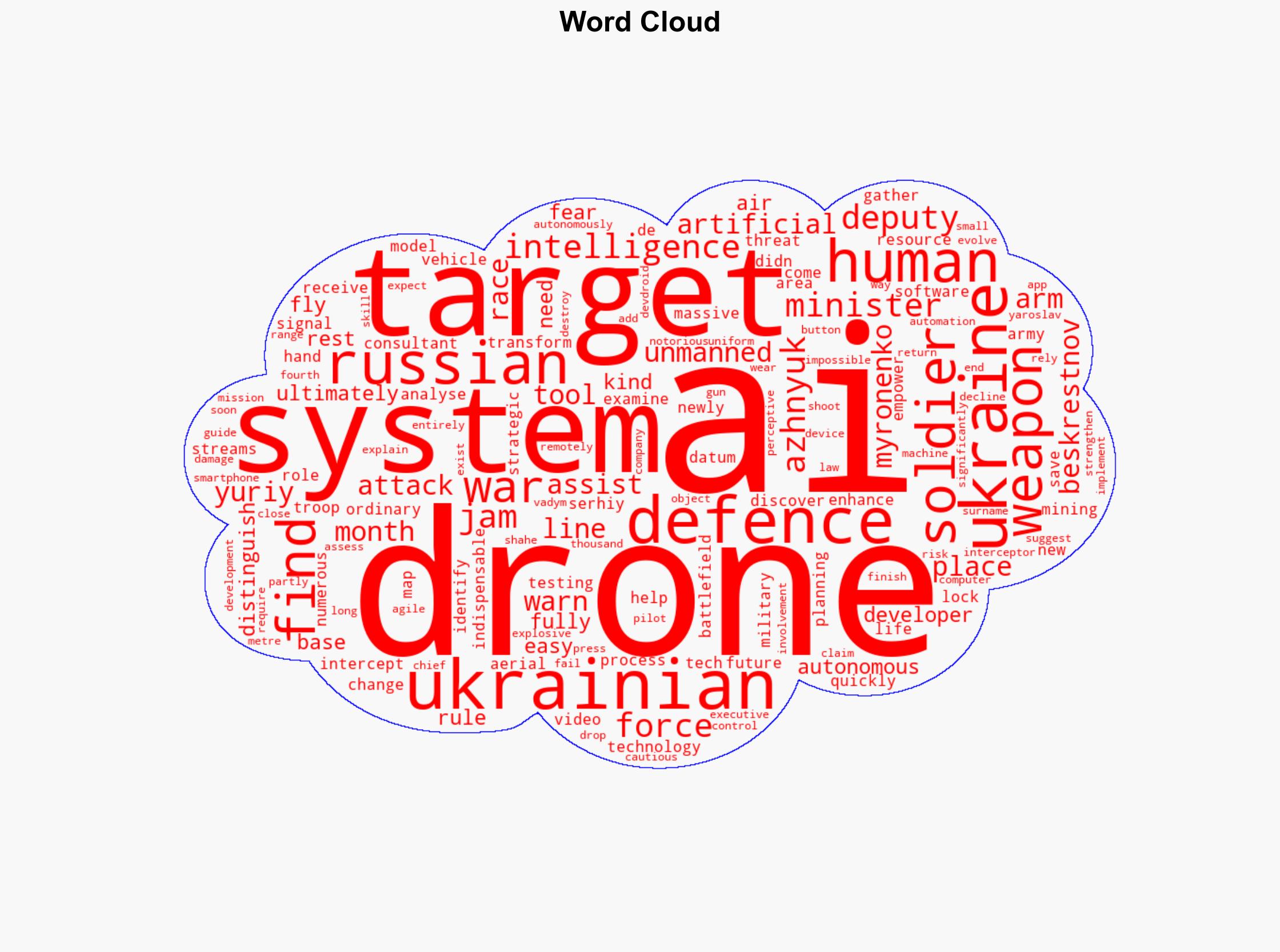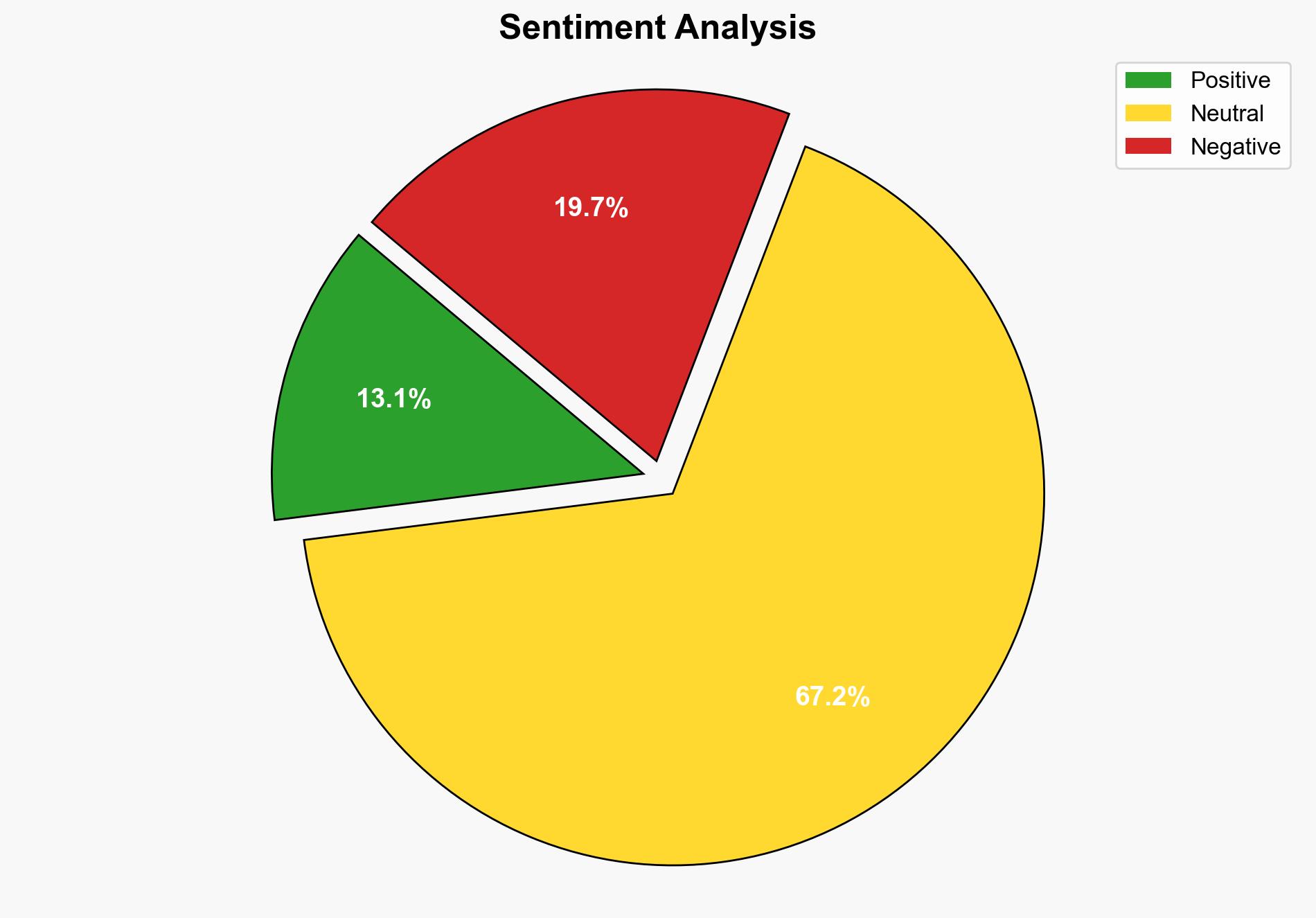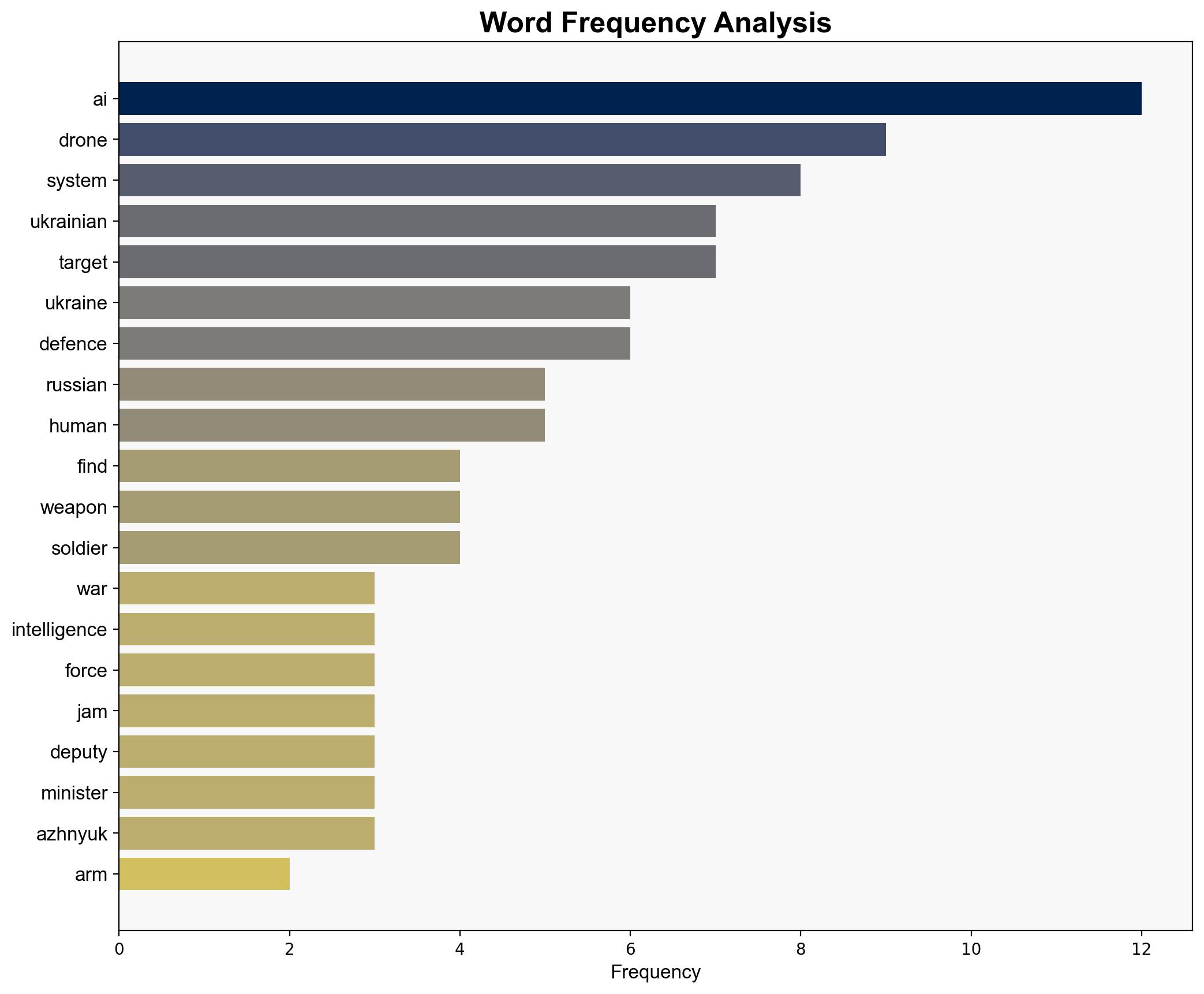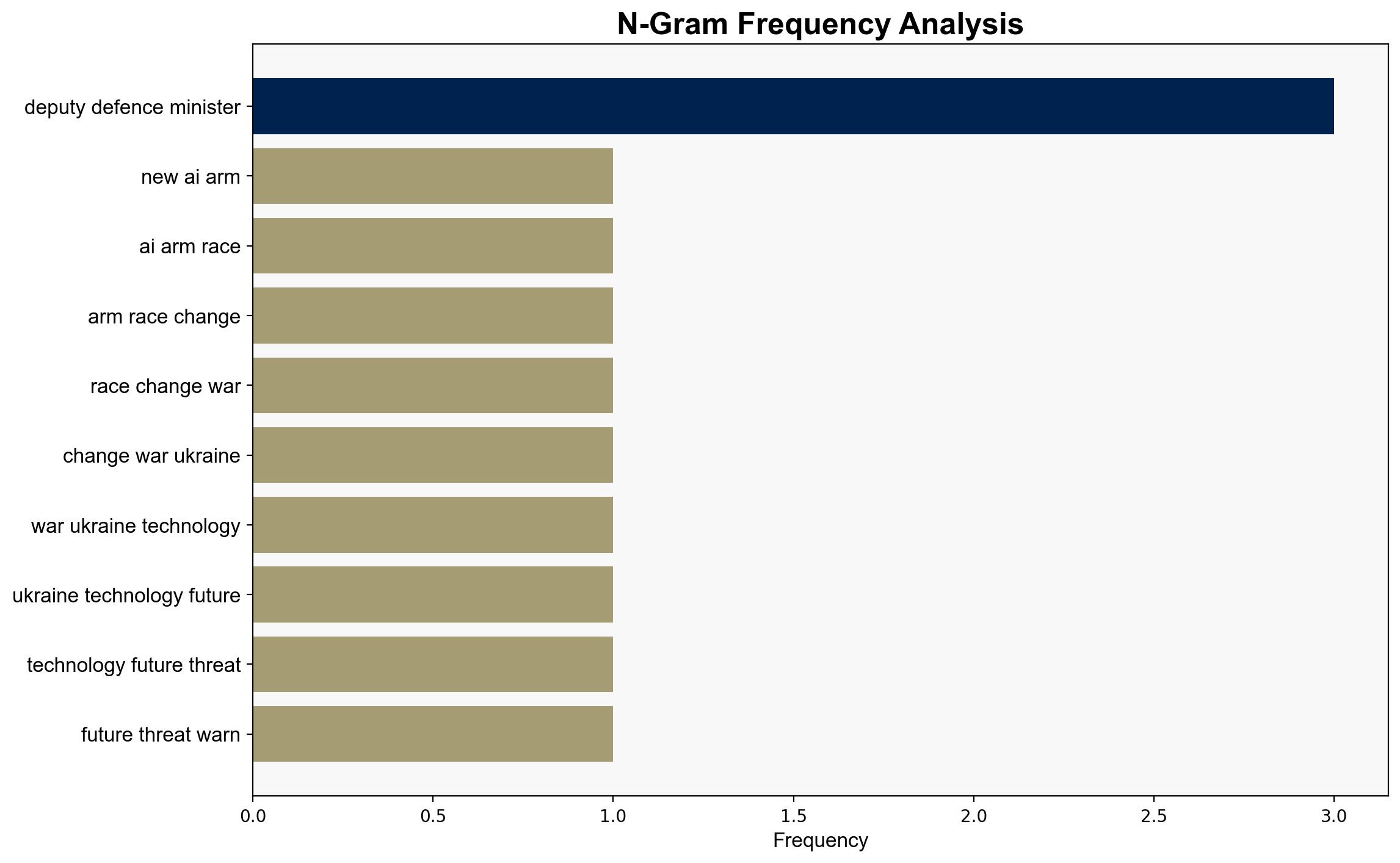The new AI arms race changing the war in Ukraine – BBC News
Published on: 2025-10-10
Intelligence Report: The new AI arms race changing the war in Ukraine – BBC News
1. BLUF (Bottom Line Up Front)
The most supported hypothesis is that Ukraine’s integration of AI in military operations is significantly enhancing its defensive capabilities against Russian forces, potentially altering the strategic balance. Confidence Level: Moderate. Recommended action is to monitor the development and deployment of AI technologies closely, while advocating for international regulations to prevent escalation and ensure compliance with humanitarian norms.
2. Competing Hypotheses
1. **Hypothesis A**: Ukraine’s use of AI in military operations is primarily defensive, aimed at countering Russian aggression and enhancing strategic planning and resource allocation.
2. **Hypothesis B**: The AI arms race in Ukraine is contributing to an escalation in military capabilities on both sides, potentially leading to a new form of warfare that could destabilize the region further.
Using ACH 2.0, Hypothesis A is better supported by the evidence of AI being used for defensive purposes such as de-mining, intelligence gathering, and air defense. Hypothesis B, while plausible, lacks specific evidence of significant reciprocal advancements by Russian forces in the source text.
3. Key Assumptions and Red Flags
– **Assumptions**: It is assumed that AI technologies will remain under human control and that ethical considerations will guide their deployment.
– **Red Flags**: The potential for AI systems to misidentify targets, leading to friendly fire or civilian casualties, is a significant concern. The assumption that AI will not be used offensively by either side could be overly optimistic.
– **Blind Spots**: The source does not provide detailed information on Russian AI capabilities, leading to potential underestimation of their technological advancements.
4. Implications and Strategic Risks
The integration of AI into military operations could lead to a rapid escalation in capabilities, increasing the risk of accidental engagements or miscalculations. Economically, the arms race could strain national budgets. Geopolitically, it may prompt neighboring countries to enhance their own military technologies. Psychologically, the presence of autonomous systems could alter the human cost calculus of war.
5. Recommendations and Outlook
- Encourage diplomatic efforts to establish international norms and treaties governing the use of AI in warfare.
- Invest in research to improve AI’s ability to distinguish between combatants and non-combatants to minimize collateral damage.
- Scenario Projections:
- Best Case: AI technologies are used responsibly, enhancing defense without escalation.
- Worst Case: An AI-driven arms race leads to increased conflict and civilian casualties.
- Most Likely: Continued development and deployment with sporadic incidents prompting international dialogue.
6. Key Individuals and Entities
– Serhiy Beskrestnov
– Yuriy Myronenko
– Yaroslav Azhnyuk
– Vadym (surname not provided)
– Volodymyr Zelensky
7. Thematic Tags
national security threats, cybersecurity, counter-terrorism, regional focus




